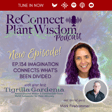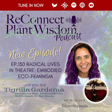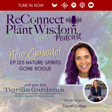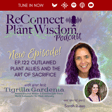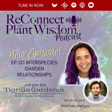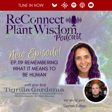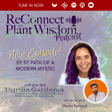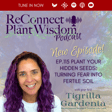
Ep.132 How Grass Teaches Us to Bend, Not Break
Have you ever felt like life keeps stepping on you—yet somehow you still grow back stronger?
In this episode, we explore what grass can teach us about resilience without hardening. From sidewalks to prairies, grass shows us how to bend without breaking, adapt without losing ourselves, and find belonging in a disconnected world.
This isn’t just about plants — it’s about how to RECOVER when life flattens you, how to ROOT deeper when pressure builds, and how to THRIVE again in your true rhythm.
If you’re craving calm, connection, and a reminder that healing doesn’t require a retreat — just awareness — this conversation is for YOU.
What You’ll Learn About Resilience & Our Nervous System
🌿 How grass models resilience without resistance
🌿 What “being stepped on” can teach us about recovery and adaptability
🌿 The science + spirit of grounding and nervous system regulation
🌿 Why belonging isn’t something to earn — it’s something to remember
✨ Next Step ✨
Join the Naturally Conscious Community to turn this insight into LIVED PRACTICE
✨ Resources
🌱 Expanded Show Notes
🌱 Music of the Plants
🌱 Blooming Sprouts → Explore plant communication & embodiment
🔗 Connect & Explore More
🌿 Website
🌿 Contact
🌿 Shop Eco-Conscious Partners
Socials
📸 Instagram
📘 Facebook
💼 LinkedIn
▶️ YouTube
🎵 Credits
Opening + Closing music by @Cyberinga and Poinsettia

